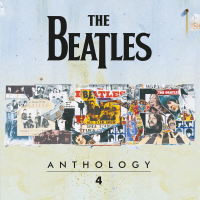Home » Jazz Articles » My Blue Note Obsession » Louis Smith: Louis Smith: Here Comes Louis Smith – 1957
Louis Smith: Louis Smith: Here Comes Louis Smith – 1957
To steal a phrase from Marlon Brando, Louis Smith coulda been a contender. He was every bit as good as any trumpeter in the 1950s Blue Note stable.
 I'm not a musical snob. I'm not a guy to drop obscure musical names to impress friends and hipsters. But when I come across a name that is undeservedly obscure, I don't mind shouting it out the window.
I'm not a musical snob. I'm not a guy to drop obscure musical names to impress friends and hipsters. But when I come across a name that is undeservedly obscure, I don't mind shouting it out the window. So here's my shout for today: Louis Smith!
Chances are you've never heard of Louis Smith. You should. He put out exactly two albums as a Blue Note bandleader, in 1957 and 1958, then disappeared for the next 20 years. Here Comes Louis Smith is his debut, followed a year later by Smithville. Both are classics of hard bop—or should be.
Like that other trumpet-playing Louis—the polar opposite of obscure—Smith had a strong, confident tone. Listen to the first 40 seconds of the first song on his debut album: "Tribute to Brownie"—a shout-out to trumpet legend Clifford Brown, who died a year earlier.
Backed only by drummer Art Taylor, Smith's trumpet emits a powerful blast of almost-unaccompanied bop. Saxman Cannonball Adderley (playing under the weird pseudonym Buckshot La Funke) leaps in and the two horns play a catchy theme. Adderley plays his best Bird-like solo, Smith follows with a solo that's equal parts Brown and Fats Navarro. Duke Jordan contributes a sprightly, toe-tapping piano solo and the whole thing wraps up in 7 joyful minutes.
It's a fantastic introduction to a fantastically underappreciated talent. Five more songs follow: a smoldering blues ("Brill's Blues'), an incendiary bebop original by Smith that could have been ripped from the Bird-and-Diz canon ("Ande"), a languid "Stardust," a mid-tempo original bopper ("South Side") and finally a scorchingly fast, misleadingly titled original called "Val's Blues." Blue it may be, but the tempo is a hard gallop and Smith is flawless.
To steal a phrase from Marlon Brando, Louis Smith coulda been a contender. He was every bit as good as any trumpeter in the 1950s Blue Note stable. Instead, after just two records, he went back to teaching and did not re-emerge until the 1970s, and then only for two more records. He recorded a few more in the '90s and died in 2016.
The world is full of could-have-beens. In the jazz universe of the 1950s, Louis Smith is very near the top of my woulda-coulda-shoulda list. We'll never know what gems we missed because Smith chose the classroom over the studio, but at least we have two certifiable diamonds. Here Comes Louis Smith is his masterful introduction.
Rating: 5 stars (out of 5)
Availability: Easy to find (isn't everything on the Internet?), but not cheap
Cost: $12 to $20, used or new
Tags
Louis Smith
My Blue Note Obsession
Marc Davis
Clifford Brown
Art Taylor
Cannonball Adderley
Fats Navarro
Duke Jordan
PREVIOUS / NEXT
Support All About Jazz
 All About Jazz has been a pillar of jazz since 1995, championing it as an art form and, more importantly, supporting the musicians who make it. Our enduring commitment has made "AAJ" one of the most culturally important websites of its kind, read by hundreds of thousands of fans, musicians and industry figures every month.
All About Jazz has been a pillar of jazz since 1995, championing it as an art form and, more importantly, supporting the musicians who make it. Our enduring commitment has made "AAJ" one of the most culturally important websites of its kind, read by hundreds of thousands of fans, musicians and industry figures every month.



























